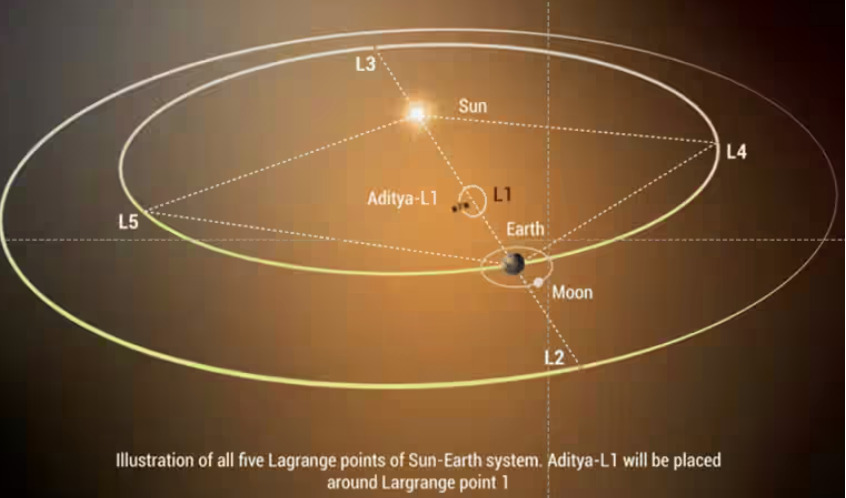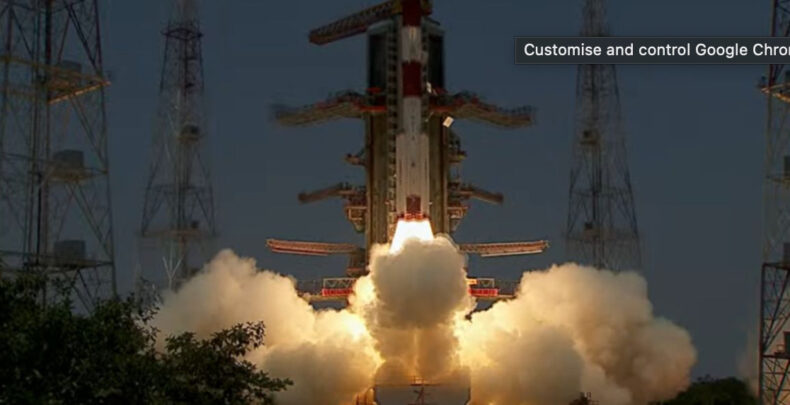ISRO’s Aditya L-1 Mission: A historic leap into space-based solar exploration. India’s scientific advancement and technological excellence on display as they unravel the Sun’s mysteries and inspire a nation.
Table of Contents
In a historic event at the Satish Dhawan Space Centre in Sriharikota, India, the Indian Space Research Organisation (ISRO) has embarked on a groundbreaking mission known as Aditya L-1. This remarkable mission comes just ten days after ISRO achieved a soft landing near the Moon’s south pole with Chandrayaan-3.
Aditya L-1 Mission Overview
Aditya L-1 is ISRO’s first-ever step into space-based solar exploration. Its primary mission is to increase our understanding of the Sun and its various phenomena.
The Path to Space
Aditya L-1 was launched into space using the Polar Satellite Launch Vehicle (PSLV) in the ‘XL’ configuration. The spacecraft’s weight is 1,472 kg, great for this configuration.
Payload Capacity: PSLV-XL boasts an impressive payload capacity, capable of lifting payloads weighing up to 1,750 kg to sun-synchronous polar orbits.
Following its launch, Aditya L-1 will be placed in a unique halo orbit around Lagrange point 1 (L1) in the Sun-Earth system, approximately 1.5 million km away from Earth. The mission is equipped with seven specialised instruments to conduct solar observations.


Objectives of Aditya L-1
The Aditya L-1 mission has a comprehensive set of objectives, including:
- Studying the Sun’s upper atmospheric layers, known as the chromosphere and corona. Analyzing coronal mass ejections (CMEs).
- Investigating the corona’s magnetic field and its impact on space weather.
- Exploring the mystery of the solar corona’s high temperature compared to the Sun’s surface.
- Investigating the acceleration of particles on the Sun, which leads to the solar wind.
What Makes Aditya L-1 Stand Out
Aditya L-1 is distinct from previous solar missions due to its holistic approach to solar observation. It aims to explore the entire spectrum of solar phenomena, spanning from the Sun’s surface to its outermost layer. This mission also places a strong emphasis on understanding space weather and its effects on satellite-dependent operations on Earth.
Key Differentiators:
- Multi-Point Observation: Aditya L-1 combines remote sensing instruments to study the Sun’s surface and inner layers with in situ instruments for on-site particle and magnetic field analysis. This multi-point approach enhances our ability to comprehensively understand solar events.
- Space Weather Focus: Unlike earlier missions, Aditya L-1 aims to provide user-friendly space weather information. It can issue space weather alerts, a crucial aspect for safeguarding satellite-dependent operations like telecommunications, navigation, and power grids.
- Cutting-Edge Technology: Aditya L-1 showcases India’s technological competence, featuring seven advanced payloads tailored for diverse solar observations.
Significance for India
India’s entry into space-based solar exploration through Aditya L-1 signifies several significant milestones:
- Scientific Advancement: India joins the elite group of nations engaged in solar research, contributing to global scientific understanding.Technological Excellence: Aditya L-1 demonstrates India’s technological innovation, showcasing advanced payloads and launch capabilities.
- Space Weather Resilience: The mission underscores India’s commitment to securing satellite-dependent operations by providing essential space weather information.
- Inspiration: The Aditya L-1 mission serves as a source of inspiration for the nation’s youth, fostering a passion for space exploration and science.
Aditya L-1 represents India’s leap into solar exploration, symbolising scientific advancement, technological excellence, and space weather resilience. Beyond the realm of science, it inspires the nation to dream big and reach for the stars, reaffirming India’s position on the global space stage.
In the grand story of the cosmos, ISRO shines as India’s space artist, turning dreams into reality among the stars. Every rocket launch brings life to our hopes, weaving innovation into the universe’s fabric. Their rockets reach for the sky, carrying not just payloads, but the dreams of our nation. ISRO’s path is a beautiful melody of commitment and genius, a rising crescendo of human capability. They’ve taken India to the stars, showing that the sky is just the beginning, not the limit.












